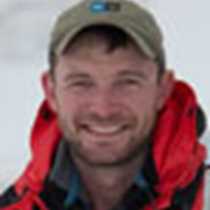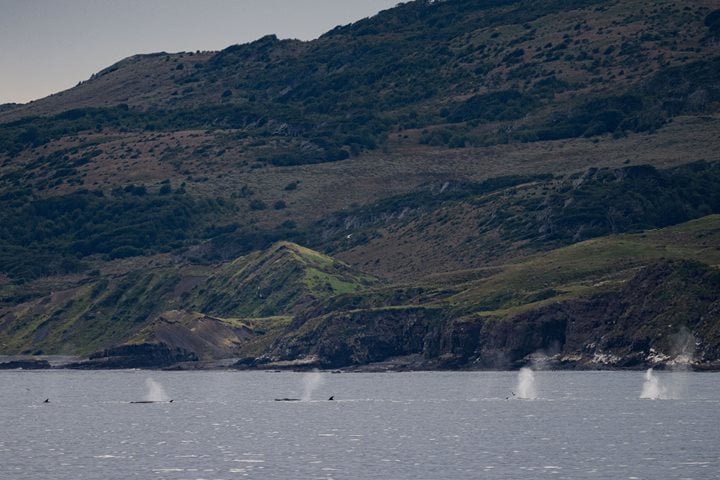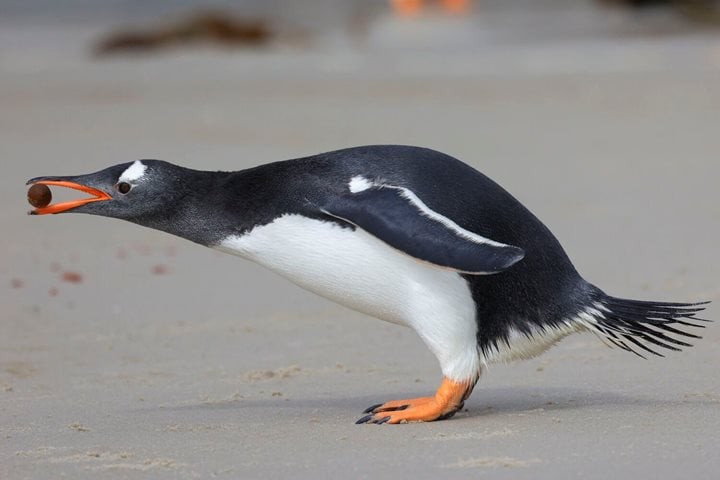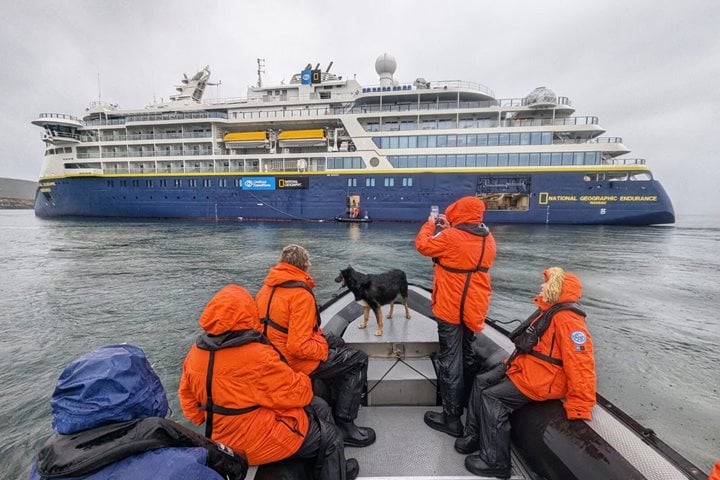Sometimes to really have an adventure you need to get off the beaten track. As if travelling to Antarctica wasn’t far enough off, today we truly went off the map in a sense. Unperturbed by a morning snow falling heavily our Zodiac fleet took off into the fog, strung out in a line like some sort of orange and black parade. Early stages of sea ice were starting to form on the surface due to the lack of wind, along with a brisk air temperature. Greasy, almost viscous-looking water was congealing and freezing into disks, or “pancakes”, that if conditions continued would connect into continuous sheets of ice. Our trusty Zodiacs have no problem silently slicing through this still somewhat slushy sea. The fog starts to lift as we pass along the steep shore lines, towering peaks above, so laden with snow that the new addition of precipitation causes gentle cascades that can be seen pouring down from afar.
As pleasant and serene as it is out here, the fact that the National Geographic Orion seemed to depart, leaving us quickly behind was mildly concerning. But exploring with experience means someone usually knows what we’re doing and our expedition leader Shaun Powell takes us through the creatively named Hidden Passage, a narrow and very shallow channel flanked by icy cliffs. On the chart this appears to be one continuous section of land, which certainly would confuse anyone trying to track us by GPS. Crabeater seals hauled out on the ice seem genuinely surprised to see us in this secret shortcut, a sensation most share when they see our amphibious hotel staff handing out hot cocoa under a blue umbrella on the other side.
Embarking the awaiting National Geographic Orion, we transited a slightly obscured Lemaire Channel for an afternoon at Peterman Island to stretch our legs. This is the location where the French Antarctic explorer Charcot was forced to overwinter and an engraving in the rocks of the letters PP, for “Pourquoi-pas” can be seen for those keen of eye. Both Gentoo and Adèlie penguin chicks can be seen here, in their varying stages of fledglinghood. Entering their juvenile phase looks every bit as awkward as it probably feels, with true feathers replacing the fluffy down in sporadic sections. After they’ve reached a size where they can’t be absconded off with by a hungry skua, the adults will both take to the sea to return with food for the chicks that will form what is called a crèche. Eventually our own hunger calls and it’s time to head back to welcome comfort of our home, making our own track north towards the Weddell Sea.







